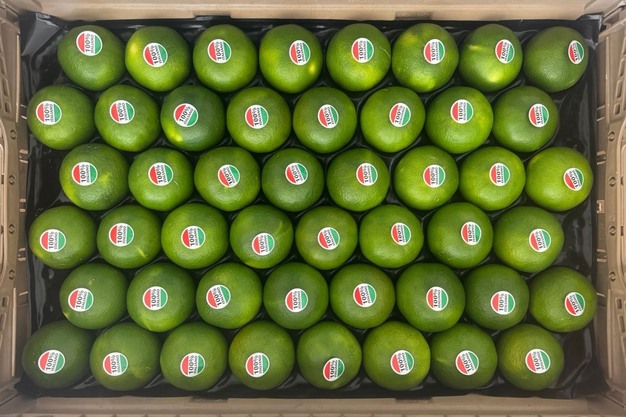The new citrus fruit campaign in Calabria is almost here, kicking off a bit earlier than usual. Sebastiano Currado, the director of OP Coppi, a producers' organization in Lamezia Terme, in Calabria, Italy, that specializes in producing and marketing citrus fruits and other produce, has confirmed this.
"As early as next week, we will be on the market with Satsumas," Currado explains. "The ripening is slightly ahead of schedule this year. The fruit already has good Brix degrees, vibrant color, and a tasty flavor."
Following the Satsumas will be the Tangelo Mapos, available starting around 20 September. This mandarin-grapefruit hybrid is a new addition to our selection. Then, the first early clementines will be available a few days earlier than usual, during the first ten days of October.
Currado continues, "The autumn calendar will continue with red grapefruit, which will be harvested from mid-October. The harvest of common clementines and Navel oranges will start in November."
 © Op Coppi
© Op Coppi
Stable production after last season's 18,000-ton campaign
Last season, OP Coppi brought a total of 18,000 tons of citrus fruit to market. Clementines accounted for the largest share, at about 8,500 tons, followed by Navel and Valencia oranges at 7,500 tons. The remaining 3,000 tons were made up of mandarins (850 tons), grapefruit (700 tons), Satsumas (700 tons), and Tangelo Mapos (300 tons).
Looking ahead to the 2025/26 campaign, forecasts predict similar volumes to last year. "There are no particular issues at the moment. Production appears solid and consistent, with positive prospects for continuity," says the director of the producers' organization.
The advance observed this year is mainly due to favorable weather conditions. "In August, we had relatively cool nights and a good temperature difference, which favored ripening and guaranteed ideal organoleptic quality ideal for marketing," Currado emphasizes. This may also be observed in the early clementines, with an estimated lead time of about a week. However, the weather pattern for the coming period remains crucial because high temperatures can slow down the coloring process of the fruit and compromise quality standards.
 © Op Coppi
© Op Coppi
The competition with Spain and efforts to make the product available year-round
Marketing is intended primarily for large-scale, organized distribution, which accounts for about 90% of production. Some is also sold through wholesalers in general markets.
It is difficult to provide a precise answer regarding the trend in demand for citrus fruits because it depends on factors such as consumption levels and market competition. Competition from imported products, especially from Spain, is a factor to consider. For example, Spanish growers start their clementine campaign much earlier, often around 20 September.
The director highlights an interesting trend regarding consumption: "Citrus fruits are available year-round, yet consumption is still associated with cold weather, juicing, and health. Today, it is still the middle of summer, and consumers tend to prefer grapes, melons, and other summer fruits. However, Currado adds, 'There are also those looking for novelty and different varieties, and that is where we want to meet demand with our early citrus fruits.'"
Operations Director OP Coppi closes with an observation as both a consumer and a producer: "After months of peaches and melons, customers often want a change. Early citrus fruits can be an interesting novelty on the shelves and stimulate curiosity and interest in buying. We hope that this mechanism will work again this year."
For more information: OP COPPI Soc. Cons. a r.l.
OP COPPI Soc. Cons. a r.l.
S. Pietro Lametino
88046 Lamezia Terme (CZ) - Italy
+39 0968 209182-3-4 / +39 0968 209051
[email protected]
[email protected]
www.opcoppi.com
